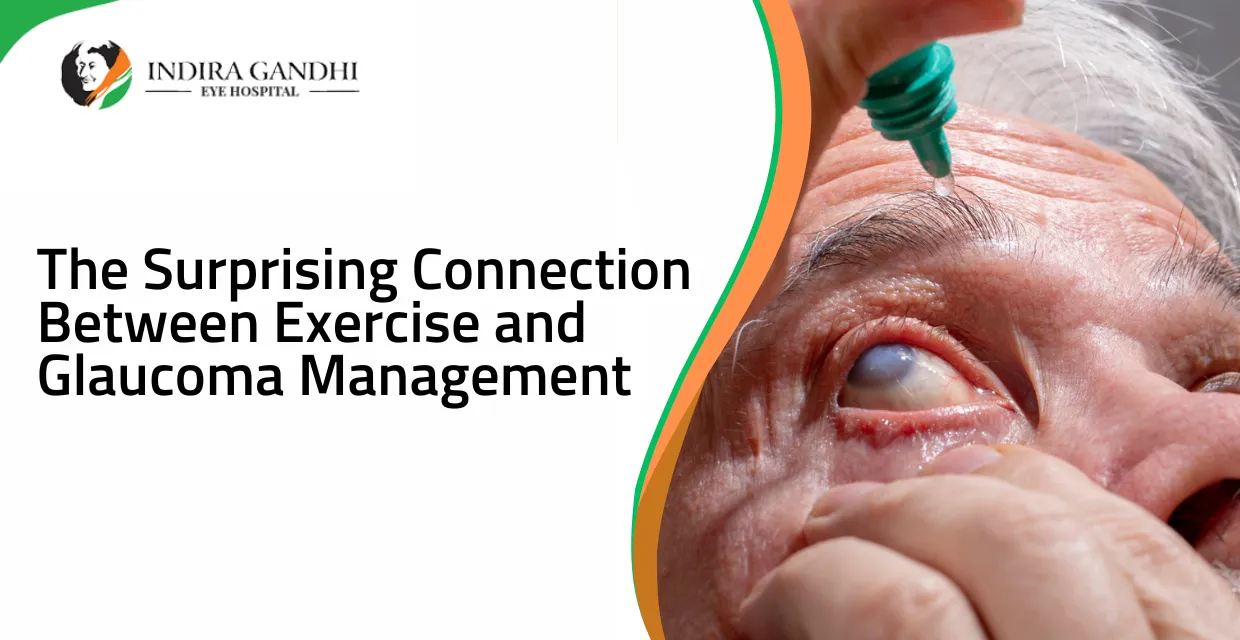Glaucoma, a prevalent eye condition affecting millions worldwide, is characterized by increased intraocular pressure (IOP) that can lead to optic nerve damage and vision loss if left untreated. While traditional treatments such as medications and surgeries are commonly employed, recent scientific studies have shed light on the potential benefits of exercise in managing glaucoma.
Glaucoma and exercise link: Scientific evidence
Research studies have increasingly highlighted the relationship between regular exercise and glaucoma management. The following key findings offer valuable insights into the positive impact of exercise on intraocular pressure and overall eye health.
Aerobic exercise reduces intraocular pressure
Aerobic exercise, such as brisk walking, jogging, or cycling, can help reduce intraocular pressure (IOP).
Regular aerobic exercise stimulates blood flow to the eyes, improving oxygenation and nutrient supply to the optic nerve.
Increased circulation from aerobic exercise can lower IOP and potentially mitigate the risk of glaucoma progression.
Engaging in aerobic exercises promotes better glaucoma management by supporting overall eye health.
Strength Training and its Effect on Glaucoma
Strength training exercises, such as weightlifting or using resistance bands, can contribute to managing glaucoma.
Research suggests that resistance training enhances overall muscular strength, which can have positive effects on glaucoma management.
Strength training exercises improve blood flow to the eyes, aiding in better oxygenation and nutrient supply to the optic nerve.
Strengthening the surrounding muscles may facilitate improved drainage of fluid from the eye, leading to reduced intraocular pressure (IOP).
By decreasing IOP and potentially slowing down glaucoma progression, strength training can be a valuable addition to the management of glaucoma.
Yoga as an alternative therapy for glaucoma
Yoga, an ancient practice that combines physical postures, breathing exercises, and meditation, has gained recognition as a complementary therapy for various health conditions. Several studies suggest that specific yoga postures and breathing techniques can help reduce intraocular pressure in individuals with glaucoma. The relaxation and stress-reducing benefits of yoga may also indirectly contribute to improved eye health and overall well-being.
Exercise guidelines for people with glaucoma
While exercise can be beneficial, it is crucial for individuals with glaucoma to follow specific guidelines to ensure safety and maximize its positive effects. Here are some important considerations:
Consult your ophthalmologist: Before starting any exercise routine, consult with your eye care professional to ensure it aligns with your specific condition and medical history.
Moderate intensity: Engage in exercises of moderate intensity, aiming for a target heart rate that is safe for you. This helps avoid sudden spikes in intraocular pressure that could potentially harm the eyes.
Regularity and consistency: Aim for a routine that includes aerobic exercises and strength training, along with relaxation techniques such as yoga, to optimize glaucoma management. Consistency is key when it comes to exercise benefits.
Conclusion: Exercise as a complementary treatment for glaucoma
While exercise should not replace conventional glaucoma treatments prescribed by medical professionals, incorporating regular exercise into your routine can serve as a complementary approach to managing the condition. Scientific evidence suggests that aerobic exercise, strength training, and yoga can help reduce intraocular pressure, improve blood circulation to the eyes, and enhance overall eye health. However, it is essential to consult with your ophthalmologist and follow exercise guidelines specific to your condition. By embracing exercise as part of a holistic approach, individuals with glaucoma can potentially experience improved glaucoma management and better overall well-being.


